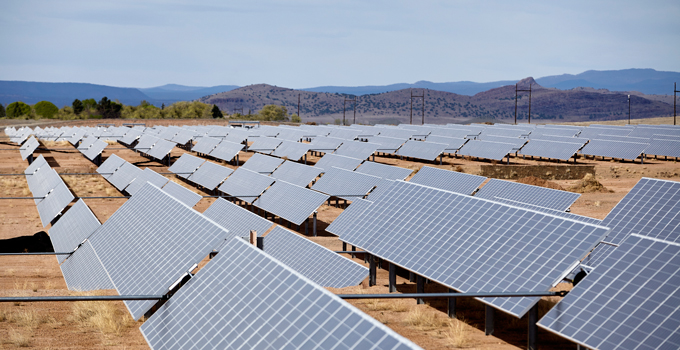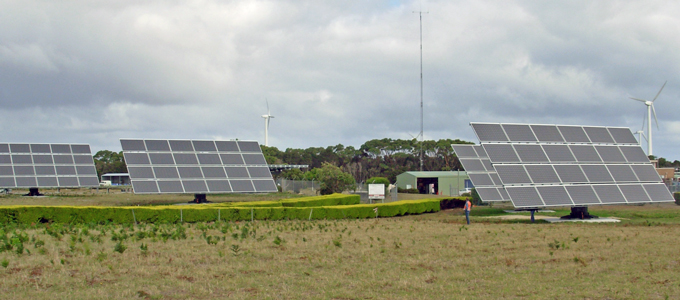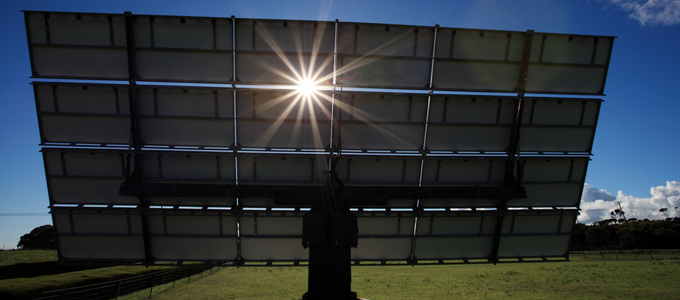THOUGHT LEADERSHIP
Six essentials for solar farm design
Is designing a solar farm child’s play… a simple matter of snapping some Lego together? Not if you’re after maximum efficiency, operability and value.

Because solar builds are modular and repetitive, there is a temptation to take a ‘Lego approach’. This is appropriate once designers have convinced themselves that the Lego bricks themselves are fully optimised and fit for purpose.
Smart, site-specific design not only gets the ‘bricks’ right, but also aims for efficiency in all aspects and fully considers technology and standards, reliability and robustness, safety, layout, civil and structural issues, and the project lifecycle. This creates benefits that multiply across the whole project and through time.
1 – Technology and standards
Fit for purpose means, in part, meeting standards. While solar standards are evolving fast and the requirements for grid connection are tightening, future-proofing with inverter technology with high-end capability seems to make sense.
AS4777 is the main standard specifically addressing inverter energy systems in Australia. It has recently been revised and includes some significant changes to inverter requirements. Formally, it only applies to small inverters/systems, but the capability requirements act as a useful surrogate standard for larger equipment.
All inverters must still, of course, comply with all the legislated electrical and fire safety, access, and environmental requirements, so if choosing an inverter for which these requirements have not been demonstrated, make sure you allow time and budget for the compliance process.
Nevertheless, inverter technology is developing quickly, and many capabilities built into inverters go well beyond the requirements of the standards. These can add value to your project by reducing downtime or potentially enabling additional revenue streams such as grid support.
In Australia, the National Electricity Rules (NER) specify the performance requirements for inverters in schedule 5. As we noted in a previous article <link to the art of solar grid connection>, choosing inverters at the higher end of functionality and enabling that functionality will help avoid niggling performance issues and constraints across the life of the plant.
Life-cycle thinking should also flow through to other internal farm considerations such as the value that trackers may add or the type and arrangement of PV cells relative to the inverters and the DC collector system.
For small to medium-scale systems (1–6 MW) you may wish to investigate if either string inverter or centralised inverter concepts offer the best value and operational flexibility.
2 – Reliability and robustness
Production is king. Every sunny day on which PV cell strings, inverters or cables are disconnected due to faults represents potentially avoidable lost production and revenue.
Design can help to minimise these sorts of outages in four main ways:
Cell layout: Diffuse and direct shadowing can limit the effectiveness of energy capture across the farm. This is particularly challenging where the farm is south of the Tropic and the angle of the sun varies across the year. Minimising the effects of the natural and built environment and the near shading of on-site structures should be considered to ensure high cell utilisation throughout the year.
Redundancy and switching: Consider eliminating common points of failure where the cost of doing so remains feasible. This could include designing for only partial failure. The modular nature of the solar farm may naturally exhibit this feature but it is worth exploring whether the redundancy cannot be extended to single points of failure like transformers and switchgear. Switchgear should be employed to allow sufficient isolation as well as protection.
Monitoring: The speed of response to equipment failure can significantly reduce the impact on production. Capital spent on data links to remote inverters can provide helpful feedback on where faults have occurred and how to manage them even before technicians arrive on site. Monitoring may also provide some value in showing efficiency degradation due to dust or grime on PV cells without potentially costly over-cleaning or observation routines.
Contingency planning: The design should be conscious of the need (where there is value) to quickly replace faulty equipment without exacerbating lost production. Providing sufficient switches and cable junction boxes for safe and quick replacement of medium-voltage AC equipment or low-voltage DC equipment will assist operators to respond faster to outages.
3 – Safety of the public and personnel
Designing for safety of construction and operation and for the safety of the public are important legal requirements.
Ensuring easy access for constructing and maintaining the electrical infrastructure and managing the land will not only enhance the safety of personnel but decrease the costs associated with working on the site. Providing lighting or hard stands for lighting equipment may also allow safe maintenance and night works.

4 – Layout
If you have a rectangular, level, north-facing space, you are fortunate. This opens up the full spectrum of layout options and it is likely that trackers may feature in the design.
However, for every other situation, there is a complex geometric trade-off between practical considerations: levelling earthworks vs more complex and time-consuming racking; orienting modules for maximum fit vs north alignment for maximum energy yield; regular layout of strings to simplify installation and maintenance vs utilising all available land.
This can be some of the most time-consuming design optimisation and requires simultaneous consideration of electrical, civil, planning, energy and financial requirements.
5 – Civil and structural
The civil structural design of array mounting is a fundamental consideration. Design of footings to suit soil conditions requires extensive geotech, and there may be a trade-off between the effort required vs the risk of variation during construction.
Another key risk for solar farms is flooding. Once you’ve identified the potential flood conditions and possible effects, you will need to consider what mitigations are available under planning and environmental conditions.
Add to this all the operational requirements for vehicle movements and the cleaning and servicing of modules, and the civil and structural design becomes a significant work package.
6 – Lifecycle considerations
The sustainability of your solar plant doesn’t just make good commercial sense; it may also increase community acceptance.
Selection of robust equipment suitable for exposure to harsh and extreme weather will minimise the need for refurbishment, waste, and failure due to exposure to service conditions and duties that are beyond plant capabilities. This may mean designing elements of the plant that will have residual service life beyond the investment time frame.
Just as ease of construction is a key design consideration, also consider the ease of demolition, site remediation and/or repowering. Ease of deconstruction of PV arrays and the ability to reclaim copper and other valuable metals may decrease your solar farm’s environmental impact.

The cost-effective level of design effort for solar farms is often thought to be low. However, we often encounter opportunities or imperatives to improve on standard approaches to suit a particular site or project.
Successful deployment of solar PV generation must include thoughtful design that considers the immediate challenges of rapid and repeated implementation while selecting from a vast range of suppliers and ensuring the greatest efficiency, operability and value for the long term.
If you would like to find out more about how Entura can help you optimise the design of your solar farm, please Silke Schwartz on +61 407 886 872 or Patrick Pease.
About the author
Dr Chris Blanksby is a Senior Renewable Energy Engineer at Entura, and Entura’s lead solar energy specialist. Chris has undertaken and published research on the solar resource in Australia, and has led several due diligence and owner’s engineer projects for wind, solar and microgrid projects in Australia, the Pacific and Asia. Chris is currently leading Entura’s owner’s engineer team assisting the Government of Cook Islands to implement six solar PV microgrid projects, and build capacity towards their 100% renewable target.
MORE THOUGHT LEADERSHIP ARTICLES
6 March, 2017






